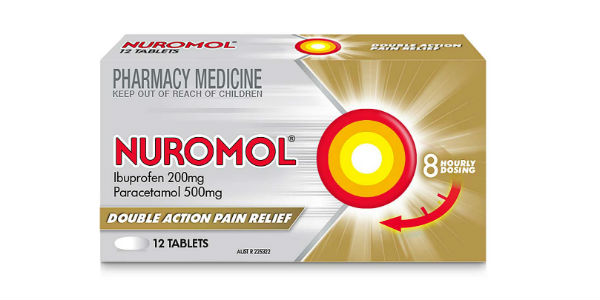A look at the pharmacological and nonpharmacological treatment options and preventative measures that pharmacists can recommend to stave off migraine attacks.
A common reason people visit the emergency department is to seek treatment for migraine.1 Migraine affects men and women of all ages, but is more common between the ages of 15–49, especially in women.2 These are busy years when people’s lives are often consumed by work, school, housework and social or leisure activities – all of which can be impacted by migraine attacks.3
Migraine attacks can be unpredictable, which can lead to last-minute time off work, reduced productivity while at work (presenteeism), or working fewer hours than planned.4 People with migraine often have to cancel plans which can affect their relationships and make them feel isolated.5
In fact, there is a stigma attached to migraine. Some people with migraine fear they are perceived as weak or lazy. As a result, they may even avoid seeking appropriate medical care. How you perceive and support a person with migraine can improve how they manage their attacks.6
What we know about migraine
Migraine can be present with or without aura. Both types of migraine attack are typically characterised by recurrent pulsing pain on one side of the head lasting 4–72 hours, often accompanied by nausea and vomiting, and sensitivity to light and sound.7
The underlying cause or causes or causes of migraine are not yet fully understood. There is evidence that temporary changes in cerebral blood vessels and chemicals involved in inflammation play some role. It is also thought to be associated with a major pain pathway in the brain involving the trigeminal nerve and the brainstem.7,8
Nonpharmacological treatment options
These strategies may help some people during a migraine attack:9
- hot packs over the neck and shoulders
- neck stretches
- rest in a quiet, dark room.
Lifestyle factors that may prevent migraine attacks in some people include:9
- regular sleep patterns
- maintaining adequate hydration
- regular exercise for 30–40 minutes, 3–4 times per week
- relaxation techniques such as meditation, mindfulness and yoga
- avoiding a person’s known migraine triggers such as alcohol, citrus, chocolate, cured meats and perfume.
How pharmacists can help people manage migraine
When people need pharmacological support to manage migraine attacks, pharmacists can recommend:
- non-steroidal anti-inflammatory drugs (NSAIDs) such as ibuprofen9, which relieve the pain and inflammation that cause the migraine8
- other non-opioid analgesics such as paracetamol9
- fixed-dose combinations of paracetamol and ibuprofen, such as Nuromol, which has demonstrated greater efficacy and duration of relief than paracetamol 1,000mg alone10
- antiemetics for treating nausea and vomiting.9
Those who do not respond to over-the-counter (OTC) pain relievers may need to be prescribed a triptan medicine by their general practitioner (GP).
Case study
A 22-year-old female walks into the pharmacy and says: ‘I have a migraine and I need something to help me with the pain’.
She is currently at university and is about to sit her exams. She occasionally suffers from migraine attacks, particularly when she is stressed. Her symptoms are: pain on the right side and sensitivity to sound. She used to take medicines that are now only available by prescription, but her supply has just run out.
How could a pharmacist help?
Start by validating her pain as a genuine health concern and reassure her that there are effective OTC options available. Once it has been established that there are no contraindications or precautions to use, a product can be recommended, such as one Nuromol tablet three times a day to help with acute pain.11 Nuromol has been shown to be more effective, better tolerated and longer lasting than paracetamol codeine 1000/30mg12 and one tablet provides up to 8 hours relief.10
You advise that during a migraine attack, she should find a quiet, dark room to recover, and apply heat packs to her neck and shoulders to relieve the tension in that area. Recommend some stress relief practices that help to prevent attacks, including medication, mindfulness and yoga.
Let her know that there are more options available, and suggest she visits her GP to discuss them further. If nausea and vomiting symptoms develop, suggest a suitable OTC medicine.
Nuromol contains 200 mg ibuprofen and 500 mg paracetamol, for the relief of acute pain and/or inflammation.
References
- Shao E, et al. The presenting and prescribing patterns of migraine in an Australian emergency department: A descriptive exploratory study. World J Emerg Med 2017;8(3):170–76. At: https://www.ncbi.nlm.nih.gov/pmc/articles/PMC5496823/
- Stovner LJ et al. Global, regional, and national burden of migraine and tension-type headache, 1990-2016: a systematic analysis for the Global Burden of Disease Study 2016. Lancet Neurol 2018;17:954–76. At: https://www.ncbi.nlm.nih.gov/pubmed/30353868
- Agosti R et al. Migraine Burden of Disease: From the Patient’s Experience to a Socio-Economic View. Headache 2018;58:17–32. At: https://headachejournal.onlinelibrary.wiley.com/doi/pdf/10.1111/head.13301
- Deloitte Access Economics. 2018. Migraine in Australia Whitepaper. At: https://www2.deloitte.com/au/en/pages/economics/articles/migraine-australia-whitepaper.html
- Pearson C et al. J Med Internet Res 2019;21(6):e10479. At: https://www.jmir.org/2019/6/e10479/
- Young W et al. PLoS ONE 2013;8(1):e54074. At: https://www.ncbi.nlm.nih.gov/pmc/articles/PMC3546922/figure/pone-0054074-g001/
- Benemei S and Dussor G. TRP Channels and Migraine: Recent Developments and New Therapeutic Opportunities. Pharmaceuticals (Basel) 2019;12(2):54. At: https://www.mdpi.com/1424-8247/12/2/54
- Padutz A and Schoenen J. Pharmaceuticals 2010;3(6):1966–1987.
- Therapeutic Guidelines. eTG Neurology version 5 2017. Migraine: approach to treatment for migraine (accessed 6 June 2019). At: https://tgldcdp.tg.org.au/etgcomplete
- Mehlisch DR et al. Clin Ther 2010;32:1033–49. A single-tablet fixed-dose combination of racemic ibuprofen/paracetamol in the management of moderate to severe postoperative dental pain in adult and adolescent patients: a multicenter, two-stage, randomized, double-blind, parallel-group, placebo-controlled, factorial study. At: https://www.ncbi.nlm.nih.gov/pubmed/20637958
- Nuromol ® Product information, 3 June 2014.
- Daniels SE et al. Pain 2011;152:632–42. At: https://www.ncbi.nlm.nih.gov/pubmed/21257263



 John Jones MPS, pharmacist immuniser and owner of My Community Pharmacy Shortland in Newcastle, NSW[/caption]
John Jones MPS, pharmacist immuniser and owner of My Community Pharmacy Shortland in Newcastle, NSW[/caption]


 Debbie Rigby FPS explaining how to correctly use different inhaler devices[/caption]
Debbie Rigby FPS explaining how to correctly use different inhaler devices[/caption]




 Professor Sepehr Shakib[/caption]
Professor Sepehr Shakib[/caption]

 Lee McLennan MPS[/caption]
Lee McLennan MPS[/caption]
 Dr Natalie Soulsby FPS, Adv Prac Pharm[/caption]
Dr Natalie Soulsby FPS, Adv Prac Pharm[/caption]
 Joanne Gross MPS[/caption]
Joanne Gross MPS[/caption]









